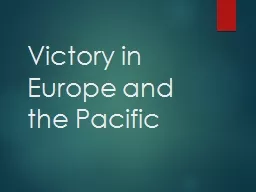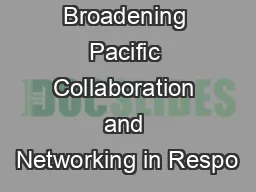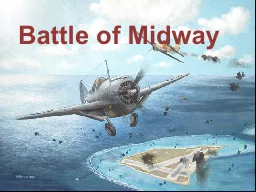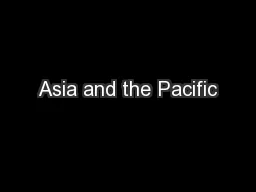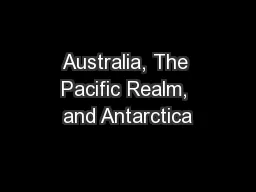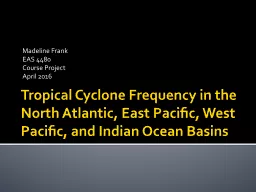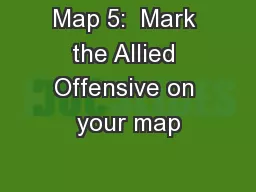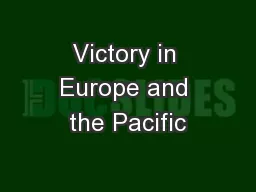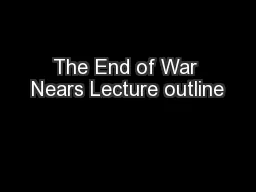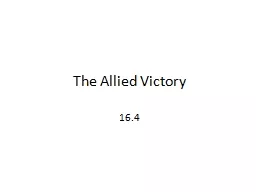PPT-Victory in Europe and the Pacific
Author : giovanna-bartolotta | Published Date : 2018-12-06
Why it Matters In 1942 and 1943 the Allies turned back Axis advances In 1944 and 1945 they attacked Germany from the west and east US advanced across the Pacific
Presentation Embed Code
Download Presentation
Download Presentation The PPT/PDF document "Victory in Europe and the Pacific" is the property of its rightful owner. Permission is granted to download and print the materials on this website for personal, non-commercial use only, and to display it on your personal computer provided you do not modify the materials and that you retain all copyright notices contained in the materials. By downloading content from our website, you accept the terms of this agreement.
Victory in Europe and the Pacific: Transcript
Download Rules Of Document
"Victory in Europe and the Pacific"The content belongs to its owner. You may download and print it for personal use, without modification, and keep all copyright notices. By downloading, you agree to these terms.
Related Documents

